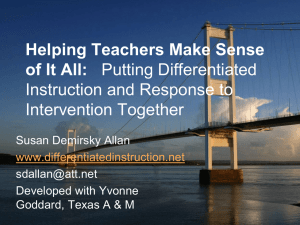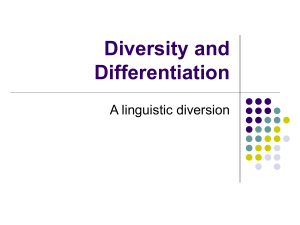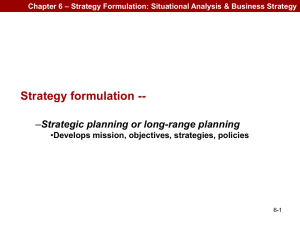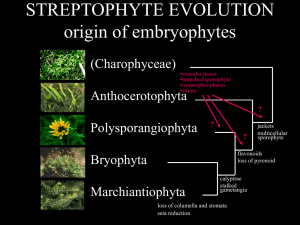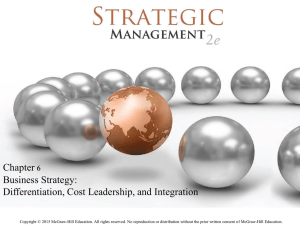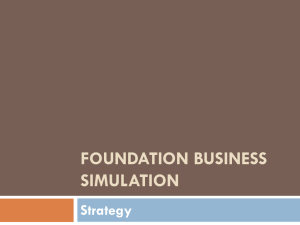Alisis - TF Differentiation Presentation 2014
advertisement
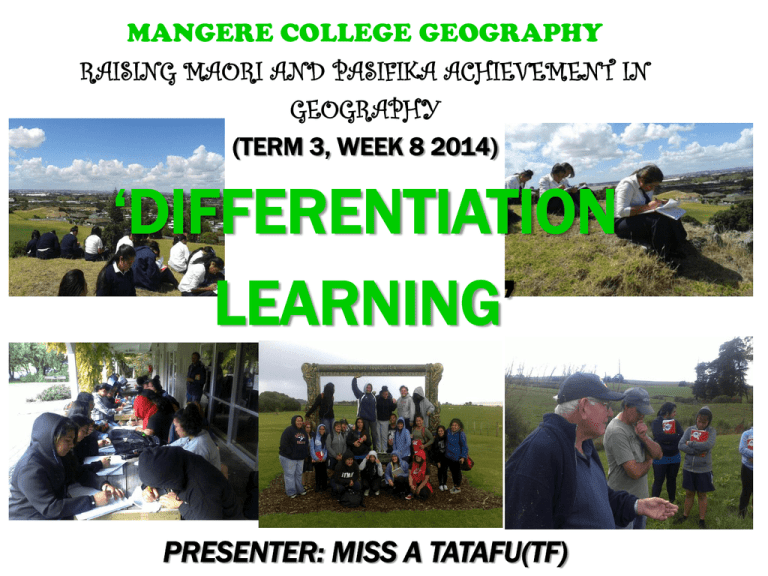
MANGERE COLLEGE GEOGRAPHY RAISING MAORI AND PASIFIKA ACHIEVEMENT IN GEOGRAPHY (TERM 3, WEEK 8 2014) ‘DIFFERENTIATION LEARNING’ PRESENTER: MISS A TATAFU(TF) ORGANISATION OF GROUPS 1. Teachers divided into 2-3 groups of 6 2. A leader has been already delegated for each group 3. The other five spaces ,feel free to sit where you like 1.LEADER: 2.PB4L OBSERVER: 3.WRITER: 4.READER: 5.RESOURCE COLLECTOR: 6.TIME KEEPER: e.g. DIFFERENTIATION WORKSHOP BY A.TATAFU OUTLINE OF DIFFERENTIATION WORKSHOP ORGANISATION of 3 GROUPS of 6 1. Introductions- ‘Alisi 2. Tf’s DIFFERENTIATION Journey 3. MC Survey results (2012) 4. Preferred Pedagogy 5. Key Theorists 6. Inclusion & KEY PRINCIPALS-Make Learning fun 7. SKILLS 8. ACTIVITY-Whole Staff 9. WHAT NEXT? 10.RECOMMENDATIONS 11.References DIFFERENTIATION WORKSHOP BY A.TATAFU2014 2014 TEAM SOLUTION GEOGRAPHY FACILITATOR Differentiated Learning=Maslow Hierarchy of Learning+ Cooperative Learning + Tukana teine ALL GEOGRAPHY TEACHERS Differentiated Learning in ALL SECONDARY SCHOOLS!!! WE CAN DO IT!!! Term 3, 18th 2014 DIFFERENTIATION WORKSHOP BY A.TATAFU2014 Differentiation Survey: Mangere College Teachers. Wk 2. Term 4 2012 Write down your basic understanding of what differentiation means Students have different learning/thinking pathway strengths. Auditory, verbal and kinaesthetic. Offer differentiated activities that allow students to choose to work in ways, so they learn in their preferred way, Do you differentiate your unit/lessons. If yes- How 2 Regulating your programme resources, planning & methodology to cater for + include all participants’ abilities, interests and preferred learning styles 3 Providing work that can be done by all students in the class- no matter their level. 4 Adjusting curriculum materials to suit learners’ different activities 5 Different students have different needs- need different teaching strategies for, say, 3 groups 6 Adapting lessons to suit the different levels of the class/ students YES Range of resources Choice of resources Fluid, mixed ability grouping Range of methodologies- iwi preferred specifically Range of assessment types YES Provide activities that have been scaffolded. Activities that get students involved, they should offer challenges for advanced students but also keep lower students interested. Yes Group students. Assign differing taks to group acc to ability Vary language and reading materials for each group acc ability- same information. Make sure information & processes are explained in a variety of ways to suit learning styles. Use co-operative learning/ buddy systems Yes High ability = briefly describe ask help if need be Mixed ability= Spend more Time: repeat lesson, expand- then begin monitor Low ability= more individual after initial start Yes- to some extent scaffold for those with limited prior learning or literacy difficulties. Extend those that are capable of extra work. 1 YES 1.Verbal expression Q +A 2. Literacy ( visual) 3.Visual ( drawing picture dictionary + diagrams) 4. Numeracy ( visual + literacy If No what support would like in differentiating your Unit/Lessons Would like support in: -new kinaesthetic learning activities - visual tasks and assessments More support to streamline + build up more relevant resourcesteamwork. _ Support Any practical examples especially to help with literacy. Examples of pedagogy i.e group work, peer work ,methods D I F F E R E N T I A T I O N W O R KAssistance S H O P Bfor Y those A . T Ajuniors T A F Uthat are 5 6 Adapting lessons to suit the different levels of the class/ students Yes- to some extent scaffold for those with limited prior learning or literacy difficulties. Extend those that are capable of extra work. Support Any practical examples especially to help with literacy. Examples of pedagogy i.e group work, peer work ,methods Assistance for those juniors that are very challenging to engage ( i.e move out of their seat etc- would be very helpful. 7 Using different teaching & learning methods to accommodate different learning styles and abilities within the same class Yes Use co operative learning methods e.g co operative Reading Squares. Also- Comic Jams ( use visual and written representations of text ) 8 Variety of Teaching Styles Yes Teaching as Inquiry 9 Students all learning at different rates No Support : Learning intentions Must make sure all leaners understand by end of lessons* using different strategies. 10 Means using various instructional methods to meet the needs of all the students in the class. No Support: Learn how to use differentiated learning in the class. Give us examples of differentially lessons/ resources/ DIFFERENTIATION WORKSHOP BY A.TATAFU 6 PREFERRED PEDAGOGY • Cooperative Learning: ( Think-Pair-share, Rally Table, Scavenger Hunt, Snowball) • Tuakana/Teina , Concept of ‘ako’ DIFFERENTIATION WORKSHOP BY A.TATAFU KEY THEORISTS • Vygotsky: Zone of Proximal Development* ( levels of student ) • Garner: Multi-intelligence ** ( Know how the student learns ) • Maslow: Hierarchy of Needs( thinking development ) • Durie: Whare tapa wha ( cultural perspective ) DIFFERENTIATION WORKSHOP BY A.TATAFU INCLUSION & KEY PRINCIPALS-MAKE LEARNING FUN • Legal requirement that all schools are inclusive. • High Quality lesson • Keep it manageable, realistic and practical and within the time frame • Know your learner: • Juniors Reading : Burt Word Recognition reading ages as a rough guide & asTTle tests • How they like to learn– Questionnaire * * • Strengths & Interests survey– Questionnaire • Build on students’ prior knowledge ( home & school) • Cultural responsive curriculum and delivery e.g cooperative learning • ASSESSMENT: authentic/ school wide levelled assessment tools • Special Needs Students: Consult I.E.P for goals DIFFERENTIATION WORKSHOP BY A.TATAFU SKILLS Functional skills: • reading, writing, social Academic skills: • Acquisition of knowledge • Responding to knowledge • Transferring knowledge • Reproducing knowledge DIFFERENTIATION WORKSHOP BY A.TATAFU WHOLE STAFF Organisation: 1. 2. 3. 4. 5. 6. Teachers divided into 3 groups of six- (A leader has been already delegated) Each group given a lesson from the Yr9 Ecology Unit Within each group, 5 people will take one of the intelligences and designs an activity that will best reflect learning in this domain. The sixth person takes the ‘Profile of a student with diverse needs’ and decide on the best learning area for that student. Group then come back together and fit activity into lesson plan. Reporter presents work their group has done, these can be displayed DIFFERENTIATION WORKSHOP BY A.TATAFU VISUAL TACTILE CREATIVE VERBAL WRITTEN DIFFERENTIATION WORKSHOP BY A.TATAFU PROFILE: TARGETED STUDENT ESOL Kilistina is Tongan and has lived in NZ for only 3 years. She is keen to learn and her family have high aspirations for her education. Tongan Report: reflects B-B+ marks for most subject areas. Started to learn Enlish in 2009– C+ Although she struggles with current lessons she tries hard and is improving slowly. STRENGTHS Willing to learn, and very social. Likes coping and doing pretty work Intellectually Delayed ADHD Joshua has been diagnosed as When on medication Sussie functioning at a 6-7 yr age can do average work. However range. often medication is skipped and she finds it hard to Although he tries he is not concentrate for any length of capable of accessing the time. written curriculum appropriate for his age. Often she is late for class and misses the beginning of the Due to Joshua’s inability to lesson. engage in lessons that have not been differentiated for him, his Behaviour and interest in class behaviour is becoming work fluctuates. disruptive in the class. STRENGTHS His parents are frustrated When focussed can produce because they don’t know how exceptional written work, which to help their son. is always beautifully presented. STRENGTHS Art and PE Bully Wayne has the reputation of being the class bully. He often uses stand over tatics to get what he wants. Previous teachers have mentioned that they think he if Gifted and Talented because he always gets his work finished first ,achieves high grades and is a creative thinker. The teacher finds it hard to provide areas of learning that interests him and at his level. Gifted & talented Wiremu is a student who is showing expetional leadership skills. However academically he struggles especially in literacy. When lessons are centred around reading and writing he becomes bored, and prone to distracting others. STRENGTHS He loves art , music and PE and is an assistant coach for a junior rugby team STRENGTHS Reading, writing, maths, debating and journalism. DIFFERENTIATION WORKSHOP BY A.TATAFU WHAT NEXT? STAFF BRAINSTORM: DIFFERENTIATION WORKSHOP BY A.TATAFU RECOMMENDATIONS Where can we go for support ? GEO CLUSATER MEETINGS & TEAM SOLUTIONS Facilitator How can we support teachers by: • providing current & relevant theories on differentiation • help teachers to gather data on their students that will support their efforts to differentiate their lessons. • Modelling, scaffolding differentiation processes such as Cooperative Learning. • Support teachers in their efforts to plan and teach differentiated topic studies • If needed an RTLB application can go in for a limited funding request for resources e.g . art resources ( Treaty House) DIFFERENTIATION WORKSHOP BY A.TATAFU References & Websites Brown,R., Thomson, C. ( 2000).Cooperative Learning in New Zealand Schools .New Zealand: Dunmore press Ltd Cooney,P. [200]. Differentiating the Curriculum: Combining Bloom and Gardiner.John Wycliffe Christian School. Dodge,Judith.Blossoming with Bloom’s (Taxonomy). Dalton,J.& Smith,D.(1986) “ Extending Children’s Special –Strategies for primary classrooms’ pp36-7 Gossage,Peter. ( 1997).New Zealand A History in Pictures.New Zealand:Puffin Books Grace,Wiremu.(2006) .The Tree Hut Treaty.New Zealand. State Services Commission. Janney,R.,Snell,M. (2000). Teachers’Guides to Inclusive Practices: Modifying Schoolwork.USA: Paul H. Brookes Lawrence –Brown, Dianna.(2004) Differentiated Instruction:Inclusive Strategies for Standards-Based Learning that Benefit the Whole Class 1.American Secondary Education; Summer 2004;32,3; ProQuest Education Journals pg.34. The Inclusive Schools Project.(1999) New Zealand The University of Waikato. Editor and principal writer David Mitchell. http://www.scholastic.com/teachers/article/what-dfifferentiated-instruction What is Differentiated Instruction? Scholastic http://www.teachercreatedmaterials.com/curriculum_files Research- Based Curriculum Applying Differentiation Strategies( 2007) USA: Shell Education. http://www.lowndes.K12.ga.US/view Conkin,Wendy. Activities for a Differentiated Classroom.Level 3. US:Shell Education. http://www.lowndes.K12.ga.us/view Multiple Intelligences Product grid: Levelled learning Centres. USA: Shell Education. Reprinted from http:www.rogertaylor.com/. (2002) Dr T.Roger Taylor http://det.wa.edu/schoolsplus/detcms/navigation/category.jsp The Department of Education- School Plus- Curriculum differentiation. Helpful hints for differentiating the Curriculum for all students. http://teachertools.london.org/ “ Teacher Tools- Differentiation. DIFFERENTIATION WORKSHOP BY A.TATAFU •http://whatsaid.wordpress.com A blog about learning. 10 ways to differentiate learning…. •http://www.curiculumsupport.education.nsw.gov.au/policies/gats/programs/differentiation Curriculum Support. NSW Department of education and Communities :NSW Curriculum and Learning Innovation Centre •http://www.adiffernentplace.org/differentiated.htm A Different Place:math,sceince,language arts, reading, technology and more •http://.ask.com/wiki/Differentiated_instruction Differentiated instruction •http://unesco.unesco.org/images Changing Teaching Practices using curriculum differentiation to respond to students’ diversity.(2004) France: United Nations Educational, Scientific Cultural Organisation.UNESCO p 1-13. •http://tip.psychology.org/bruner.html Constructivist Theory ( J.Bruner ) •http://en.wikipedia.org/wiki/Taxonomy_of_Educational_Objectives Taxonomy of Educational Objectives. •http://www.wycliffe.nsw.au/imagesDB Philip Cooney Differentiating the Curriculum: Combining Bloom and Gardiner •http://teaching.uncc.edu/articles-books/best-practice-articles/goals-objectives/writing Writing Objectives Using ‘Bloom’Taxonomy •http://www.ask.com/wiki/Zone_of_proximal_development Zone of proximal development. #### •http://www.businessballs.com/maslow.htm Abraham Maslow’s Hierarchy of Need motivational model. •http://gifted.tki.org.nz/For- schools-and-teachers/Twice-execeptional Differentiation Differentiation for the 2E student ( personalised learning •http://www.johnbiggs.com.au/solo_taxonomy. John Biggs: 2011. Solo Taxonomy •http://www.learningandteaching.info/learning/solo. SOLO taxonomy •http://www.ask.com/wiki/Structure_of_observed_Learning_Outcome SOLO the Model. •http://www.glencoe.com/sec/teachingtoday/subject/di Differentiating Instruction: Meeting Students Where They Are, Teaching Today.(2000). Willoughby,J. New York: Glencoe/McGraw-Hill. •http://pamhook.com/solo-taxonomy SOLO Taxonomy- HookED DIFFERENTIATION WORKSHOP BY A.TATAFU & S.MARX TERM 4, WEEK 5 2012 NOTES DIFFERENTIATION WORKSHOP BY A.TATAFU


